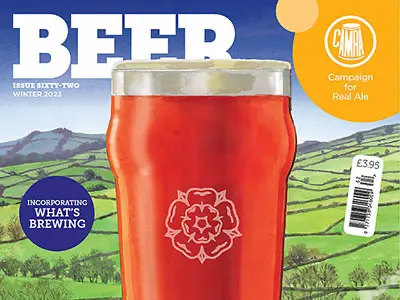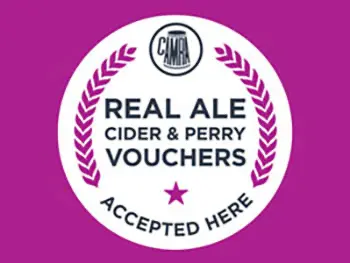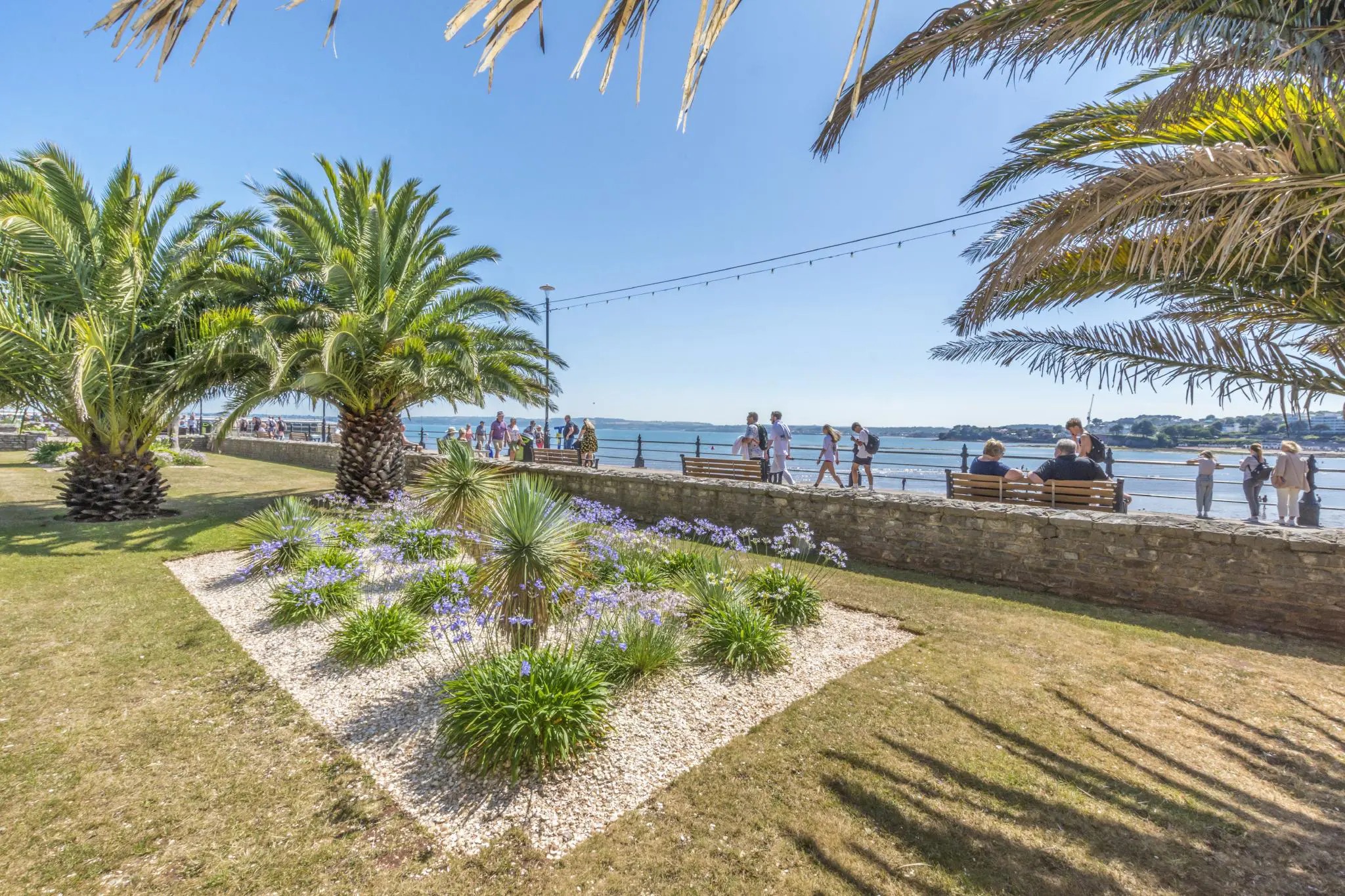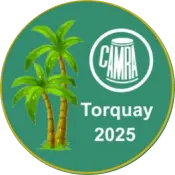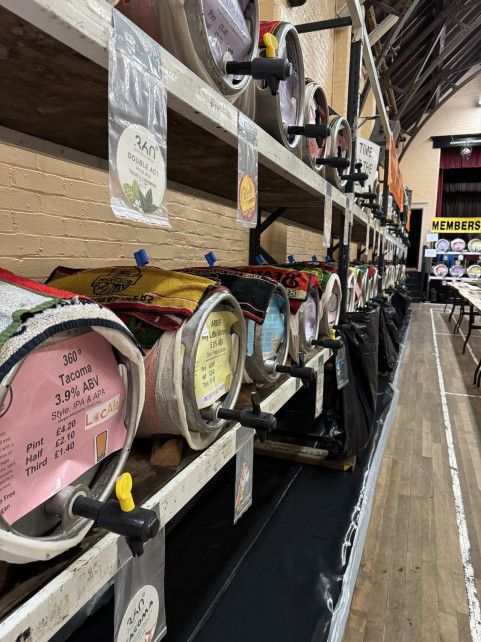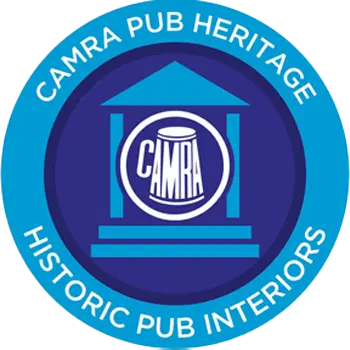The Bartons Arms is one of the most beautiful pubs in the country being full of Victorian splendour. It was threatened with demolition in 1969; altered and restored in 1980; but it struggled to attract trade and closed in 2000, re-opened in February 2003.
It was built 1899-1901 by James & Lister Lea (the job architect was a Mr Brassington) and has been described, with some justice, as looking like a small town hall. It is a large wedge-shaped three-storey pub in stone and red brick in a loosely Jacobean style with Dutch shaped gables prominently sited on a corner including a tall square clock tower. The interior is truly spectacular with a magnificent display of tiling by Minton Hollins including a tile-painting. Two bars have original snob screens, which only survive in about ten pubs in the whole of the UK. There is lots of decorative etched glass, a large stained glass window on the staircase and a fine stained and leaded screen. Sadly, the wooden partitions which created three different rooms in the bar and also around the staircase hall were removed in 1969. As a result of alterations and restoration work in the early 1980s it is now possible to walk from room to room through a series of mainly tiled archways.
A Tour of the Pub
The lino-tiled public bar has some large decorative windows with both etched and stained glass, colourful tiled walls, a partly sloping floor and two splendid vestibule entrances with 'The Bartons Arms' mosaic floors. Look for the old barometer over one of the exterior doors. One of the four (now confusingly named) 'Lounge' windows in the doors has been replaced - can you spot which one ? Try running you hand over the windows on the 'sloping side' of the room and you will realise one has a shallower cut. If you look up in the middle of the room you will see a column with a colourful fleur-de-lys capital. The bar back has two decorative gilded mirrors in the centre and three bevelled mirror panels either side, one of which on the sloping / Potters Lane side is a recent replacement - can you spot which one ? The carved bar counter has a range of Oakham ales as well as guest beers. Also on sale are a number of specialty bottled beers, mainly Belgian strong ales - ask for the menu!
Through an arch you reach a small room where the bar was slightly moved in 1980. It still has its rare snob screens and cut glass panels going right up to the ceiling above. The bar front here is not what it first appears to be as it is actually fibreglass panels made to look like original tiles ! The walls have genuine tiles - look for the small tiled 'Minton Hollins & Co. Patent Tile Works Stoke-on-Trent' nameplate here.
Spot the Difference
Next is an inner lobby which has tiled walls and tiled arches on three sides. The middle arch is the original Victorian one, but those to the left and right were created in the 1980 restoration. Compare the tiles and decorative tiled panels of a lady and you will spot the difference! Note the double doors with 'Smoke Room' deeply etched and frosted panels and through them the large porch with a plaster ceiling and wonderful colourful tiled walls in yellows, reds, greens and brown etc. There is a door that is no longer used with a number '3' on a small button, which was a requirement by the licensing magistrates in the past for all rooms in a pub.
Left through an arch is the large former games room, which is now a two-part lounge. As you enter there is a splendid tiled, cast-iron and decoratively carved fireplace with a coal fire. The upholstered original fixed bench seating runs around most of the room and in the wood panel above you will notice a number of bell-pushes, no longer working, which were used to get table service in the past.
The most striking feature is the wonderful large oval-shaped stained and leaded glass window screen at the far end - entitled 'Mine Host'. This was moved in the 1980s restoration from the arch to the right and is now in a false partition wall - if you inspect the tiling on the false wall and compare it to the tiles in the rest of the room you will notice the difference in colour and texture!
Visit the unaltered gents', if you can, to see the original tiled walls and the six large original urinals. In the rear part of the lounge are more tiled walls, upholstered original fixed bench seating with mirrored panels above, again with bell-pushes and another splendid fireplace with a coal fire.
More Tiles!
An arch leads to the Staircase Hall which has a lovely tiled floor but due to some damage it is currently covered over by carpet. This small area has colourful tiled walls with a tile-painting of a pink coated hunting scene in rich colours. A curving staircase with richly painted wrought-iron balustrade picked out in gold has two massive decorative iron light standards at the foot of the stairs.
The multi-coloured tiled walls continue all the way up the staircase and around the first-floor landing. At quiet times ask for permission to walk upstairs and inspect the wonderful huge stained and leaded window which includes the words 'Erected 1901' and the logo of Mitchells & Butlers, also more of the tiled walls. There are two former public rooms upstairs - the club room (now called the Board Room) and the billiard room. The legendary Joe Davis, who was many times world champion for both snooker and billiards, played here in exhibition matches throughout the 1930s and '40s.
Many pubs have upstairs public rooms (another is the Stags Head, South Shields, Tyne & Wear),
but with very few exceptions these have been brought into service after the building of the pub and /or do not have historic serveries.
At the bottom of the staircase you walk into the splendid lobby with its recessed bar, a counter with multi-coloured tiled front, one of less than 20 in the UK, and a multi-coloured tiled arch over the whole area. There are five sections of bar with snob screens and just enough space underneath to serve drinks. These were devised to give privacy to drinkers in the smoke room. Two snob screens that needed replacement now have frosted glazed Oakham Ales logos in them. There are extensive cellars which have a narrow trough throughout to drain away rainwater from the street.
Other heritage pubs with snob screens are Prince Alfred, London W9; Lamb, London WC1; Posada, Wolverhampton , West Midlands; Travellers Friend, Woodford Green, Greater London; Gate, London N22; Bunch of Grapes, London SW3; Crown, London N1; and Crown & Greyhound, London SE21 but these have been moved.
